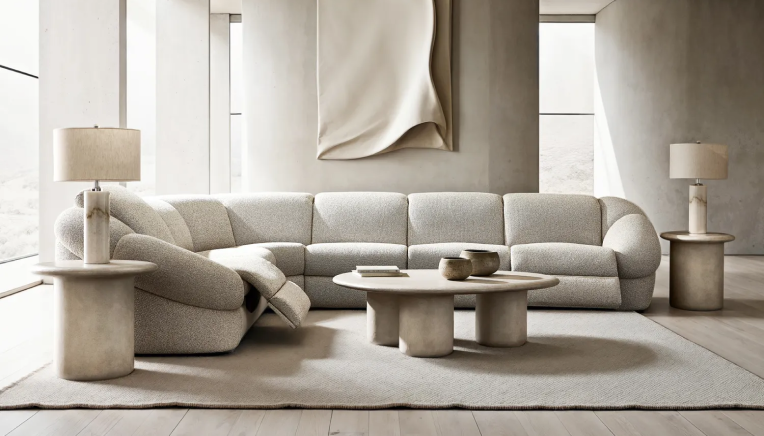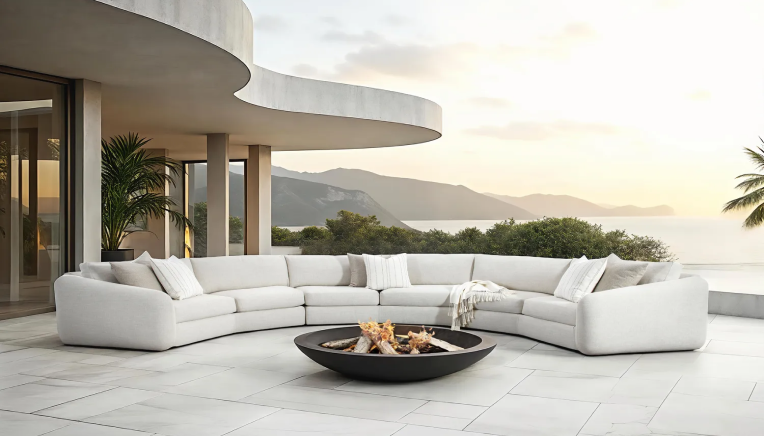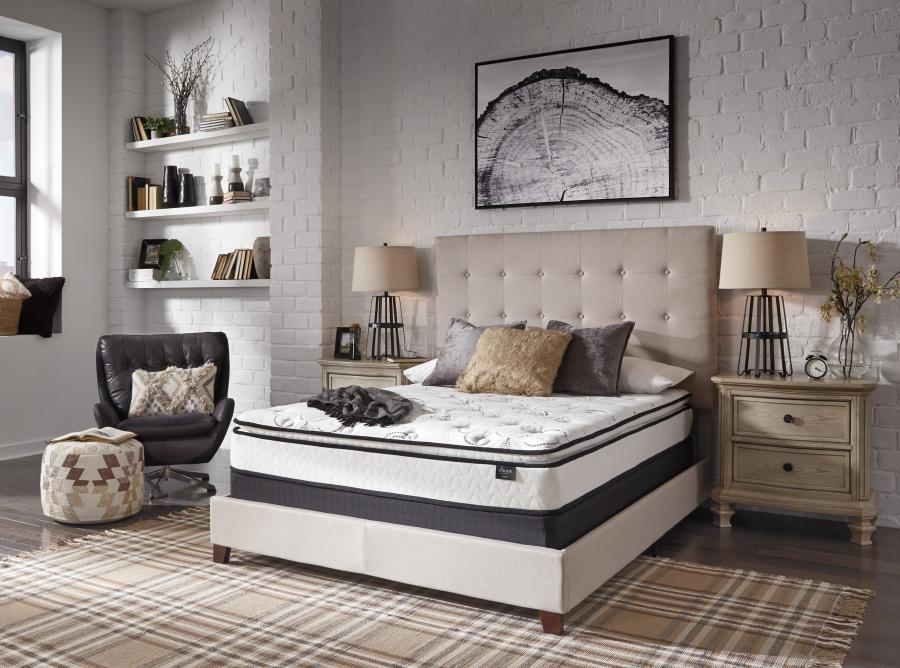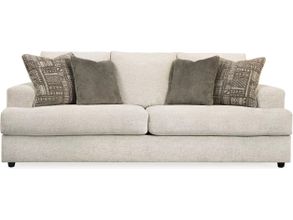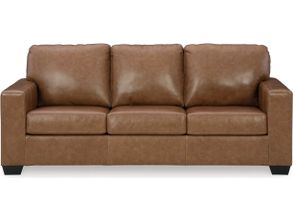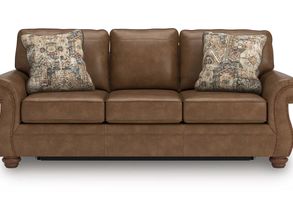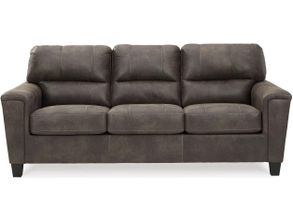
Choosing the right sleeper sofa for your home will depend on a number of elements - from the size of your family to the number of guests you plan to entertain and the space available in your home. Many modern sleeper sofa options exist - from sectional sleeper sofas to tri fold sleeper sofas - all in various sizes intended to accommodate various needs. Hundreds of variations in texture, pattern and design also exist, making the quest to find your perfect sleeper sofa that much more difficult. Follow below to learn more about how to go about choosing the perfect sleeper sofa for your home and family.
Who Invented the Sleeper Sofa and Why?
According to Laurie L. Dove in her article “Who invented the sleeper sofa?” for How Stuff Works, convertible beds have existed for hundreds of years. Dove writes that the “Ancient Egyptians fashioned daybeds by lashing palms together” and in the 18th century AD, “Thomas Jefferson recessed beds into alcoves at the home he called Monticello.” Also in early American history - according to Dove - “George Washington's Mount Vernon guests slept on a settee that could morph into a bed.” However, until 1885, no patent had been filed for a sleeper sofa design in the United States. In the late 19th century, Black female designer Sarah E. Goode submitted a patent request for a “folding bed that could fit into a writing desk.” Goode created the first patented convertible bed much for the same reason consumers buy sleeper sofas today.
She proposed the design as a solution to the cramped quarters of small space apartments in Chicago - which struggled to accommodate full-size, single-use furniture. Goode’s design encouraged others to turn towards multi-functional furniture pieces as the decades wore on. Shortly after Goode’s patent was approved, another Black American - Leonard C. Bailey - was awarded a patent for a “folding bed” - the first official sleeper sofa in the United States. Bailey’s design closely resembles the sleeper sofas of today - including a “metal bed frame and mattress that folded in the center.” Just a decade after Bailey’s patent was approved, the “Murphy bed” was born! Today, writes Dove, “there are dozens of patents” for sofa sleepers - including the simple pull out couch - “but most have basic features in common, including a folding mattress and frame.”
What Exactly is a Sleeper Sofa?
A sleeper sofa is a formal sofa containing a fold-out mattress. Used for both a guest bed - or primary resident bed - and a seating area, a sleeper sofa is an incredibly versatile piece of furniture. Often confused with futons and sofa beds, sleeper sofas are the most formal and traditional pieces of furniture of the three types. Sleeper sofas are equipped with fully functional - and typically standard size - cushions that can be removed and placed aside when the mattress is folded out. Beneath the cushions of a sleeper sofa is a metal frame into which a mattress is strapped. Beneath the metal frame is a traditional sofa base. Sleeper sofas can easily be used as traditional sofas as they differ very little aesthetically and functionally from couches.
What is the Difference Between a Sleeper Sofa, a Futon and a Sofa Bed?
Consumers - and even sellers and marketers often apply the terms “sleeper sofa,” “futon” and “sofa bed” interchangeably. However, the three do differ from each other in a number of key ways. According to the article “Futon Primer” from Futons to Go, a sleeper sofa traditionally “looks like a standard couch,” requiring removal of “the seat cushions and pulling out the mattress which is attached to a metal frame.” Mattresses associated with sleeper sofas are typically “thinner than a standard mattress” and equipped with a backing bar. Conversely - according to Candace Osmond in her article “Futon vs Sofa Bed” for The Sleep Judge, “a futon is a basically a mattress that can fold into a couch-like piece of furniture.”
Futons fold back into mock-furniture pieces but are generally considered less attractive and less appropriate for formal living spaces. Lightweight and small in size, futons are often preferred by those in small apartments or cramped living quarters when compared to sleeper sofas. However, sleeper sofas easily blend in with other formal furniture, making them more presentable and versatile. Sofa beds are a cross between futons and sleeper sofas. They fold up into a more traditional couch - much like a sleeper sofa - but are not equipped with a removable mattress. For those still confused by the differences, one might compare a sleeper sofa to a Murphy bed and a futon to a camping pad. To better understand which type is right for your home, watch this video illustrating the uses of futons, sofa sleepers and sofa beds:
5 Steps to Choosing the Right Sleeper Sofa
#1 Consider the Size of Your Space
Modern sleeper sofas are available in a number of mattress and frame sizes - from large sectionals with a queen mattress to more compressed chaise lounges with twin mattresses. Companies have recently begun marketing RV and camper sleeper sofas for those taking their adventures on the road. Understanding the amount of space available to your guests - or to you - when using the sleeper sofa both as a couch and a sleeper is incredibly important to choosing the perfect sleeper sofa. Loveseat sleeper sofas are great for small spaces but queen-size beds are often better for larger areas.
According to Laura Oglethorpe in her article “Sofa Secrets: How to Choose the Perfect Sleeper Sofa“ for Houzz, “you don’t want to have to move lots of furniture around whenever you want to transform the sofa into a bed.” Oglethorpe explains that - while compact as a couch - “foldout sleepers take up the most space when converted to a bed.” As such - writes Oglethorpe - “If you have a tight fit, go with a pullout pop-up.” While a queen-sized sofa sleeper might not work well in a living room used daily by residents - as a coffee table or armchairs might need to be moved each time it is folded out - it might be the perfect choice for a guest bedroom.
#2 Keep in Mind Who Will Use the Sleeper Sofa
Before choosing a sleeper sofa, experts recommend determining who exactly will be using the sleeper sofa most frequently and what their preferences are. If your guests are young nieces and nephews or grandchildren, you might choose a smaller sleeper sofa for the guest bedroom. However, you might also wish to go with a larger sleeper sofa to accommodate them as they age. If your most frequent guests are couples, you might choose a larger sleeper sofa able to accommodate two fully-grown adults.
#3 Reference Surrounding Furniture
One should consider both the location, heft and design of surrounding furniture before choosing a sleeper sofa. When considering surrounding furniture, you should keep in mind the difficulty - or danger - involved in moving each piece. For instance, a heavy glass and iron coffee table located directly in front of the sleeper might be too much of a chore to move each time the sofa sleeper is folded out. You should also consider the aesthetics of the sleeper sofa before buying.
As so many colors, textures, patterns and designs are available - from classic to contemporary - buyers should not settle for a piece that does not fit in well with their surrounding furniture. Investing in a sleeper sofa is different in this way from purchasing a sofa bed or futon. While sofa beds and futons are limited in design and upholstery, sleeper sofas are available in nearly as many varieties as single-futon couches are. As such, style should never be sacrificed in the name of function when it comes to sofa sleepers!
#4 Stay Within Your Budget
A multitude of both luxury and affordable sleeper sofas exist in stores and online, so following a budget - no matter whether it is $500 or $5,000 - can be fairly easy. According to Tyler Moyer in his article “Best Sleeper Sofa - Our Top Picks for 2020 and Buyer’s Guide” for The Mattress Nerd, buyers can expect to pay $600 - on the low end - for a quality sleeper sofa. A luxury sleeper sofa might cost upwards of $3,000. To determine whether or not a budget-friendly sleeper sofa is indeed a quality piece, Moyer recommends assessing its construction and materials. Moyer writes that “the strongest frames will use furniture-grade plywood or solid wood.”
#5 Determine the Sleeper Sofa’s Primary Function
In his article “What to Know Before Buying a Sleeper Sofa” for The Spruce, design writer Abe Abbas writes that - when choosing a sofa sleeper - “the most important thing to consider whether it will be primarily used as a bed or for seating.” Abbas writes that “if you plan to use it as the primary sleeping surface for yourself,” you should “look into the type of mattress that comes with it.” Certain types of mattresses - like air beds - might be comfortable for a single or several nights, but would not be comfortable or practical for everyday use. On the other hand, an inner-spring mattress might be perfectly suitable for nightly use by the owner. If you do plan to use the sleeper sofa more often as a bed than a couch, Abbas recommends looking for a sleeper sofa with a reliable “mechanism that opens and closes easily.”
Types of Sleeper Sofas Available
Though many sizes, designs and aesthetics of sleeper sofas exist, there are three basic mechanical models of sleeper sofa available on the market today. According to Tyler Moyer in his article “Best Sleeper Sofa - Our Top Picks for 2020 and Buyer’s Guide” for The Mattress Nerd, the three types of sleeper sofas are “convertible sleeper sofas,” “lift-and-pull sleeper sofas” and “daybeds.” Moyer explains that convertible sleeper sofas are those that “fold down via the back to create a flat surface for sleep.” Many convertible sleeper sofas can be angled at 45 degrees for lounging as well. Lift-and-pull sleeper sofas - writes Moyer - are likely the most common and recognizable form of sleeper sofa.
They typically feature “a classic sofa style with pillows and a frame that pulls up and out of the sofa base.” Last are daybeds, which more closely resemble beds than sofas. According to Moyer, daybeds are the simplest design of sofa sleepers and are “similar to a twin-size bed that sits horizontally along a wall.” Daybeds are rarely used as traditional sofas in living spaces as the trundle element is typically visible even when compressed. Follow below to learn more about the various aesthetic and functional types of sleeper sofas.
Sectional Sleeper Sofas
Sectional sleeper sofas are perhaps the most versatile of all sleeper sofas. They are the most convertible type and can work in both large and small spaces - depending on the size of the sofa itself. According to Emma Seymour in her article “9 Best Sleeper Sofas of 2020” for Good Housekeeping, sleeper sectionals might even include “storage in the chaise,” making them “perfect for holding pillows, blankets, and sheets.” Sectional sofas are typically designed as lift-and-pull or convertible sleeper sofas, with many equipped with a pull-out under-frame. Many are available in U-, curved or L-shaped designs.
Tri Fold Sleeper Sofas
A tri fold sleeper sofa will rarely include a separate mattress or complicated internal mechanisms. Tri fold sleeper sofas involve a three-step unfolding process. The first step is to remove the top cushions, followed by lifting and pulling the base of the couch out and downwards. A rack or pair of legs is folded down from the internal seating portion of the sofa that folds out. Next, the back of the sofa is set down, much like a futon’s backrest is lowered. Finally, the sofa’s cushions are replaced in the hollowed area of the sofa between the backrest and the seat. Tri fold sleeper sofas are frequently found in guest bedrooms, small spaces and campers because they are comfortable as a small couch - or loveseat - but can quickly be folded out into a bed.
Small-Space Sleeper Sofas
In her article “The 8 Best Small Sleeper Sofas of 2020” for The Spruce, product reviewer and interiors writer Camryn Rabideau writes about the benefits of small-space sleeper sofas. Rabideau defines a small-space sleeper sofa as one “measuring under 85 inches (2.16 m) in width.” Camryn Rabideau endorses small sleeper sofas because they offer a “versatile way to add to the functionality of your home.” Though one might imagine small-space sleeper sofas to be too tiny to accommodate adult sleepers, Rabideau writes that many “models come in twin-, full-, or even queen-size mattresses in a variety of styles and price points.”
Choosing a Sleeper Sofa Mattress
In their article “Is Sleeping On The Couch A Bad Idea”, the National Sleep Foundation’s writers explain that “while they used to mostly contain spring mattresses (which can result in getting poked or creaky springs waking you up when you roll over), sleeper sofas now come with memory foam options and air/innerspring hybrids, where there is some air inflated above the traditional spring-style mattress to make it much thicker.” Though the fancier - and much more comfortable mattresses - can “add between $100 and $250 to the cost of the sofa,” they might be well worth the price.
The Sleep Foundation recommends testing out mattresses in stores ahead of time, but if you cannot, consider the mattress on your own bed before making your choice. If you find the perfect sleeper sofa but hate the mattress it comes with, you can always replace the mattress with one that best suits your needs. Just be sure to replace a queen with a queen or a full of a full. You can also augment the mattress that comes with your sleeper sofa by adding a mattress cover or foam topper.
FAQs About Sleeper Sofas
What is the Most Comfortable Sleeper Sofa?
Ashley Sleeper Sofas. Emily Seymour - in her article “9 Best Sleeper Sofas of 2020” for Good Housekeeping - mentions comfort as a key element in quality sleeper sofas. She places the Bladen Full Sofa Sleeper by Ashley Furniture - high on her list in the #2 spot. According to Seymour, “over 500 of the panelists consulted for her article purchased their sofas from Ashley HomeStores, giving rave reviews for both style and comfort.” Purchasers reportedly raved about “how comfy the sofa and bed are to lounge on; they also love the affordable price, as it's made from polyester with a leather appearance.”
How Can I Make a Sleeper Sofa Mattress More Comfortable?
With a Mattress Topper. In their article “, the National Sleep Foundation’s writers recommend upgrading your mattress if it is uncomfortable. To make your sleeper sofa mattress more comfortable, you can add a mattress cover or cushioned topper! We recommend a down alternative or memory foam mattress topper for superior comfort.
Can I Buy an American Leather Sleeper Sofa?
Yes. Though Italian leather is often considered the pinnacle of quality when it comes to upholstery and furniture manufacturing, there are a few great American leather options. However, faux leather seems to be used more commonly than real leather these days. Our favorite American furniture companies offering real leather sleeper sofas is J&M.
How Much Does a Sleeper Sofa Weigh?
Around 180 pounds. According to the article “Sleeper Sofa Buying Guide” by Sleepers in Seattle, the average sleeper sofa weighs “about 180 lbs.” According to the article, most of a sleeper sofa’s weight actually comes from the “sleeper mechanism, generally made from steel.” Some smaller sizes of sleeper sofa might weigh closer to 100 pounds (ca. 45 kg), but many “premium sleeper sofas” can weigh as much as “250 pounds (0.11 t).”

